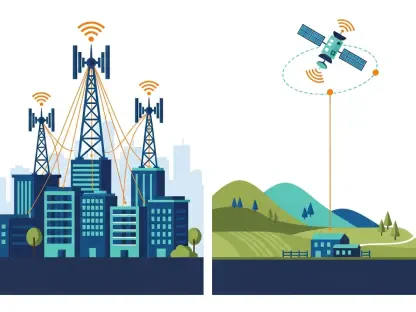What if your internet speed was so fast that you could download a 4K movie in seconds? This dream has become a reality with the launch of China’s first commercial 10G broadband network, a significant leap in global telecommunications.
The Significance of this Breakthrough
In Sunan County, Hebei Province, near Beijing, Huawei and China Unicom have introduced a network that delivers astounding download speeds of 9,834 Mbps and a latency of merely three milliseconds. This achievement positions China as a formidable player in the global tech race, pushing its technological boundaries and infrastructure capabilities.
The Strategic Importance of 10G Broadband
This technological marvel emerges at a crucial time in the U.S.-China tech rivalry. Amid global trade tensions and stringent export controls, China has been compelled to bolster its domestic innovation. Enhanced telecommunications infrastructure isn’t just a technical upgrade; it translates to significant societal benefits, including smarter cities, advanced AI applications, and a more robust economy.
Understanding the Technology Behind the Launch
At the core of this launch is the 50G Passive Optical Network (PON) technology. This tech promises high bandwidth and low latency, setting it apart from previous technologies like 5G-Advanced. The successful partnership between Huawei and China Unicom has proven instrumental. This network isn’t just about enhanced speeds; it’s about paving the way for applications in VR gaming, cloud computing, UHD live streaming, and industrial IoT.
China’s Dominance in Optical Access Technologies
Experts like Ao Li from the China Academy of Information and Communications have hailed this development. Industry leaders, including Yang Lifan from China Unicom Beijing, emphasize the strategic value of the 10G network. Research indicates that China dominates the optical access market, controlling 85% of global PON ports, cementing its lead in next-gen technologies.
Transformative Impact for Industries and Society
China’s 10G broadband promises to revolutionize various industries. AI-driven automation and cloud-edge collaboration are set to enhance network efficiency. However, challenges like scalability, cost of infrastructure, and cybersecurity concerns cannot be overlooked. Other nations and industries can draw lessons from China’s approach, potentially adopting similar strategies to advance their own tech landscapes.
Prospective Global Influence and Challenges
Looking ahead, the implications of China’s 10G network are profound. The technology could redefine global standards, boost economic growth, and potentially reshape international markets. Expanding this network to more regions could bridge the digital divide, offering advanced connectivity in both urban and rural areas. However, geopolitical risks and concerns over cybersecurity remain significant hurdles.
China’s 10G broadband, heralded by Huawei and China Unicom, sets a new benchmark for connectivity standards. This network has the potential to not only revolutionize industries but also reshape global technological landscapes, highlighting the persistent complexities of geopolitical dynamics.









